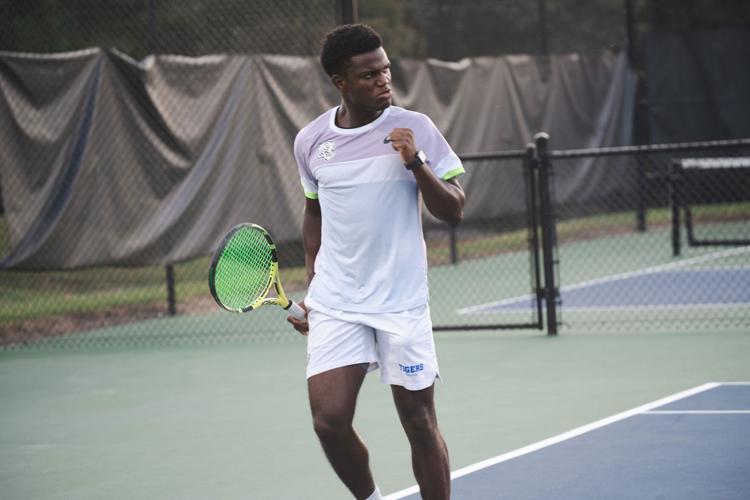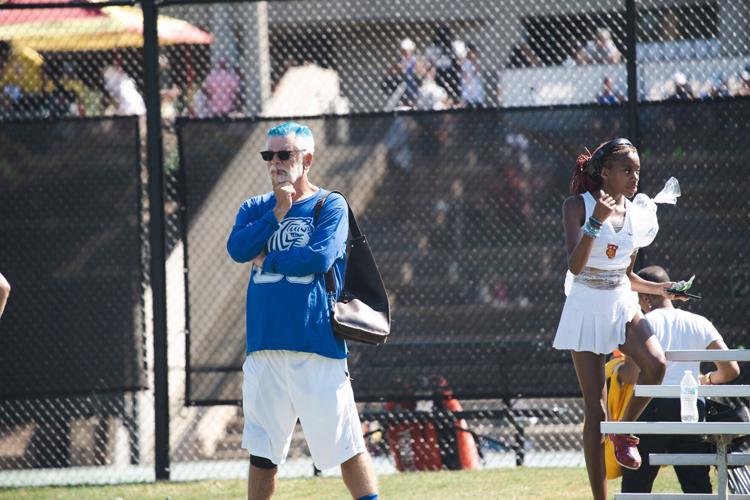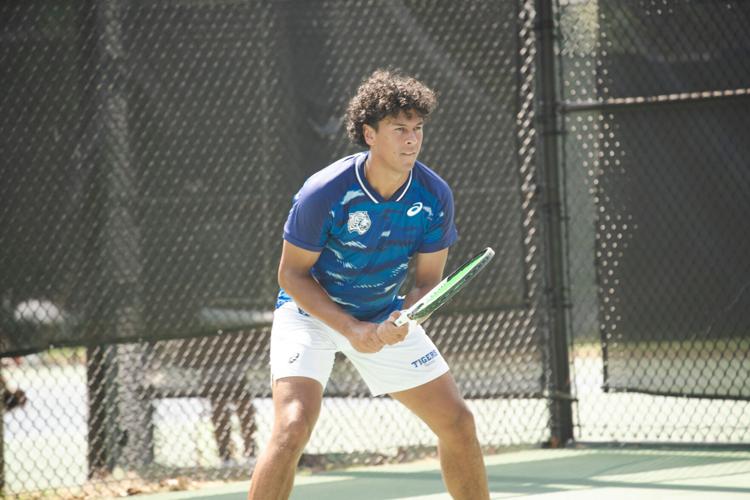On the amateur tennis landscape in America, college programs often function as a miniature United Nations.
Of the eight players on the men’s tennis team at Tennessee State University, for example, five hail from countries other than the United States. According to a 2022 study by Next College Student Athlete, an organization that helps athletes and coaches navigate the recruiting process, that number lines up with college tennis’s national average: 61 percent international players, the highest among all Division I sports.
TSU’s student-athletes from Haiti, Australia, South Africa, Zimbabwe and Poland have formed the nucleus of a program that has won back-to-back HBCU National Tennis Championships. (The acronym stands for historically Black colleges and universities.) Despite being from all corners of the world, with multiple language barriers and countless cultural differences, the TSU team is a tight-knit international hodgepodge.
Unlike American athletes, elite-level international athletes often leave home for specialized academies at a young age so they can pursue a career in their chosen sport. Tatenda Mutetwa, a TSU junior from Zimbabwe, hasn’t seen his family since he was 13. Teams morph into families.
“When I’m in college here, that’s my family,” Haitian American sophomore Christopher Bogelin says. “Even when we’re on break, we stay in contact. We are family.”
Soccer was Bogelin’s first sport of choice. But when the 2010 earthquake ravaged Haiti, many of the local soccer fields were either destroyed or converted into disaster-aid areas — so he made the switch to tennis. Bogelin, who was adopted by a family in Florida prior to his arrival at TSU, says the collision of cultures makes for a unique melting pot.
“I think that’s what makes it great, that all of us are different,” he says. “We bring different ideas. For example, the music for warm-ups, we all have different tastes. … It keeps it exciting.”

Rohan Loubser
Where some teams might fracture over a lack of similarities, cultural differences have brought the TSU men’s tennis team closer together.
“I think you just embrace [the differences], it’s super cool,” says Australian junior Taj Hibbert. “You know you have a place to stay wherever you want to go in the world — Europe, Africa, Australia or America.”
After finishing second at the 2022 HBCU National Tennis Championships, the Tigers took home the first-place trophy in 2023 and 2024 — with individual national champion Jonasz Dziopak, a native of Poland, leading the way.
A slew of accolades and program firsts followed: In September, Hibbert and Rohan Loubser teamed up to win the Horizon League doubles championship, while Hibbert claimed the singles title. In October, Dziopak and Hibbert became the first Tigers to compete at the Intercollegiate Tennis Association’s All-American Championships. In November, Loubser and Hibbert topped the doubles consolation bracket at the ITA Conference Masters Championship.
Unlike professional tennis, where players only have to worry about themselves and their own results, college players have to balance individual results with team goals. The Tigers have excelled at both.
“We do have that individual season, but we act as a team,” Hibbert says. “It never really feels like you’re playing as an individual. … We’ve all individually had moments, but the team here has a very special connection.”
Despite all the successes, just a few weeks after the ITA triumph, head coach Todd Smith resigned. Smith had built the program up to its current heights nearly from scratch. For almost two months afterward, volunteer assistant Pat Patrick acted as the interim coach for both the men’s and women’s programs. In late January, John Trondson was hired as the university’s director of tennis. Trondson — who’d been an all-conference tennis player at Middle Tennessee State University in the early 1990s and was a TSU assistant coach after that — has a three-pronged approach when it comes to guiding student-athletes through a busy schedule filled to the brim with academic and athletic responsibilities: “One is the academic piece. The second is the tennis piece. Third is the personal piece.”

Pat Patrick
It’s a tough balance to maintain. According to a study conducted by the NCAA in 2022, 30 percent of student-athletes admitted to feeling “extremely overwhelmed,” while 25 percent said they were “mentally exhausted.”
“If you had the answer, I would want it,” says Loubser, who came to tennis via his father, a squash player in South Africa. “I’m just trying to study as hard as I can, give 100 percent in everything that I do, even though it’s not necessarily the healthiest thing to do. I have to sometimes put 80-20 into schoolwork, maybe 80-20 into tennis, but I’m still struggling with that balance — but working my way toward getting better.”
With the spring semester in full swing, there’s barely time to stop and take a breath, especially with the program’s first conference championship on the to-do list and a 3.6 cumulative team GPA to maintain. Luckily, they have a makeshift family to fall back on.
“In terms of the program, I think it just needs to be highlighted,” Loubser says. “We’re doing something special here.”
Through the end of March, TSU Tennis is holding a matching grant fundraiser, which means every dollar raised (up to $10,000) will be matched during this time.








